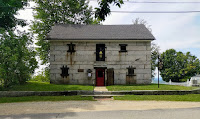
16 Apr Tour Creator is Closing – Here Are Some Alternatives
Like thousands of other people, this week Google sent me a reminder that Tour Creator is shutting down at the end of June. I’ve enjoyed making virtual reality tours with it since the first day it was available. I’m disappointed that Google is shutting it down, but there’s no sense crying over spilled milk so I’m turning my attention to alternatives to Tour Creator. If you’re in the same boat, here’s a selection of alternatives to Tour Creator to explore.
Cardboard Camera
Like thousands of other people, this week Google sent me a reminder that Tour Creator is shutting down at the end of June. I’ve enjoyed making virtual reality tours with it since the first day it was available. I’m disappointed that Google is shutting it down, but there’s no sense crying over spilled milk so I’m turning my attention to alternatives to Tour Creator. If you’re in the same boat, here’s a selection of alternatives to Tour Creator to explore. Story SpheresStory Spheres is a neat tool for adding audio recordings to 360 imagery. Story Spheres lets you upload short audio recordings in which you describe to viewers what they’re seeing, the history of what they’re seeing, and the significance of what’s in the scene they’re seeing. It’s possible to upload multiple recordings. When you’re done you can can share your Story Spheres story in a blog post, on social media, or any other place that you typically post a link. Take a look at this Story Spheres story about Uluru to get a better sense of what can be done with Story Spheres. Last year I wrote directions for how to use Story Spheres. You can read those directions here or watch my video about how to make a Story Spheres story. CoSpaces EDUCoSpaces is a platform that offers students the ability to create their own small virtual worlds. Unlike the other tools in this list, CoSpaces is an animated environment. I used CoSpaces last summer and early in the fall. It’s not a tool that students will use to create a VR experience in a day. Instead, students need to spend at least a few days using CoSpaces to really get the hang of building and animating their virtual worlds. Google Street View AppThe Google Street View app for Android and iOS offers more than just a way to view interesting places around the world. The free app includes a camera function that can be used to capture 360 photospheres. When you tap the camera icon in the app it will guide you through taking a series of pictures that will be automatically stitched together to form the photosphere. The completed photosphere can be shared with others in a variety of ways including direct sharing via SMS or email, posting on social media, or by contributing to the Google Maps community. The Google Street View iOS app is available here. The Google Street View Android app is available here.Cardboard CameraCardboard Camera is a free Android app offered by Google. The app lets you take a 360 panoramic image that you can share to view in Google Cardboard viewer or similar VR headset. The app will capture any sounds including your voiceover present while capturing the image. Those who use Cardboard Camera on Android can save their VR images in Google Photos where they can be cropped and edited with basic image filters. Cardboard Camera for Android is available here. Here’s a video tutorial on how to use the Cardboard Camera app. Unfortunately, Google hasn’t updated the app at all since 2018 so I’m not sure how much longer it will be a viable option for creating VR images. A Related, Confusing NoteIn addition to shutting down Tour Creator, Google is shutting down Tour Builder. Tour Builder was Google’s alternative method to building tours directly in Google Earth. If you used Tour Builder, you have until the end of June to export those tours as KML files that you can then move into Google Earth. I outlined that process in the video included with the written directions here. If you’re interested in learning more about Google Earth and Google Maps, take a look at my self-paced Crash Course in Google Earth & Maps for Social Studies. This post originally appeared on FreeTech4Teachers.com. If you see it elsewhere, it has been used without permission. Sites that steal my (Richard Byrne’s) work include CloudComputin, Today Headline, and 711Web. Free Technology For Teachers, Google Earth, Google Expeditions, google maps, how to, Tour Creator, Virtual RealityRead More
Free Technology For Teachers, Google Earth, Google Expeditions, google maps, how to, Tour Creator, Virtual RealityRead More


Sorry, the comment form is closed at this time.